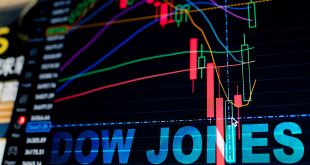Contrary to the positive surprise provided by the last week’s US NFP and jobs data, the US inflation profile expectations depict a downbeat scenario ahead of the key US Consumer Price Index data for January. Last week’s NFP data continued to support the USD on Monday.
Economic Data
The economic docket for Monday held light data including Australia’s TD Securities Inflation that rose past 0.2% to 0.4% in January while ANZ Job Advertisements improved to -0.3% versus the revised down prior figures of -5.8%. Further, the AiG Performance of Services Index also improved past 49.6 to 56.2 whereas Q4 Retail Sales output flashed record growth of 8.2% in Q4 2021 versus 8.1% prior. Hence, AUD data offered a good start to the bulls.
The US dollar is staying resilient against its rival currencies at the start of the week following Friday’s rebound, which was fueled by the upbeat January US jobs report.
Other Developments
The latest remarks from ECB President Christine Lagarde before the EU parliament did not add anything new to her remarks in last week’s post-ECB meeting press conference. Last Thursday, Lagarde’s refusal to reiterate a prior statement that rate hikes in 2022 are unlikely and greater emphasis on upside inflation risks triggered a lurch higher in EUR/GBP from fresh multi-year lows under 0.8300.
Eurozone inflation risks are on the rise but price pressures could still subside before becoming entrenched in expectations, European Central Bank President Christine Lagarde said on Monday.
Pointing to mounting inflation risks, Lagarde opened the door last week to an interest rate hike later in 2022 and said that a March 10 meeting will be crucial in deciding how quickly the bank would wind down its long-running bond buying scheme, a cornerstone of its stimulus efforts.
“We have to bear in mind that demand conditions in the euro area do not show the same signs of overheating that can be observed in other major economies,” Lagarde told the European Parliament’s committee on Economic and Monetary Affairs.
The Trump administration imposed metal tariffs on dozens of countries in 2018, saying that a excess of foreign steel and aluminum threaten US manufacturers out of business and pose a national security threat.
The Nippon Steel Corp. plant in Kashima, Japan, in 2018. The Biden administration is expected to announce on Monday a new deal that would allow up to 1.2 million tons of Japanese steel into the U.S. duty-free each year.
The Nippon Steel Corp. plant in Kashima, Japan, in 2018. The Biden administration is expected to announce on Monday a new deal that would allow up to 1.2 million tons of Japanese steel into the U.S. duty-free each year.
Bitcoin gained 6% in the past 24 hours, although trading volume remained low. Bitcoin rallied above $43,000 on Monday, retracing about 30% of the sell-off since November. It is expected the short squeeze rally could continue, with less momentum compared with previous price surges.
For now, technical indicators show additional room toward resistance at $45,000-$47,000. Bitcoin is testing its 50-day moving average after an oversold bounce left support intact around $37,400.

 Noor Trends News, Technical Analysis, Educational Tools and Recommendations
Noor Trends News, Technical Analysis, Educational Tools and Recommendations




